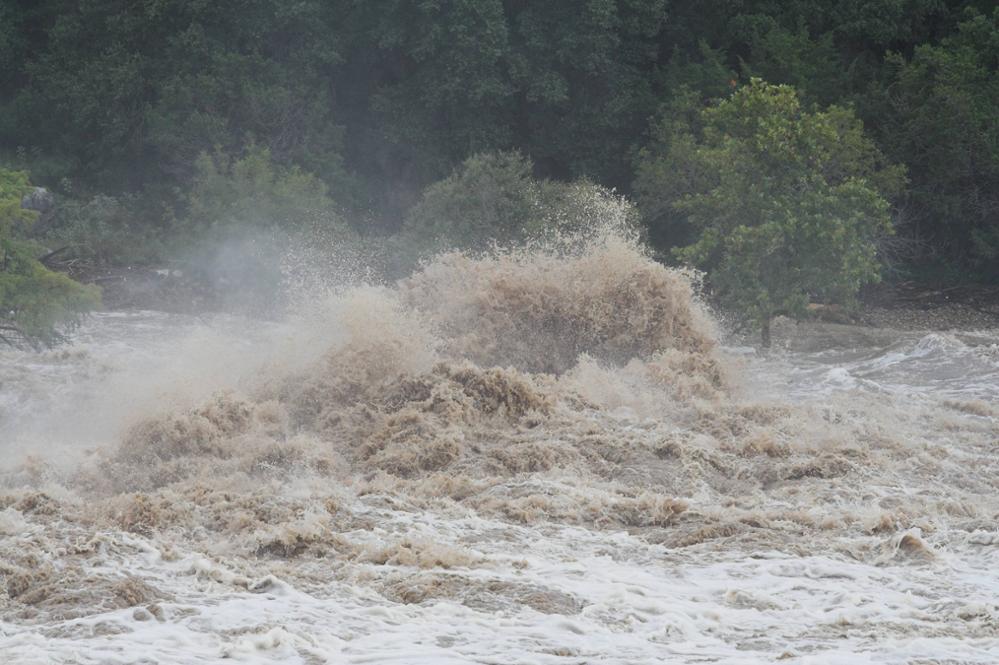Texas makes unprecedented strides toward flood mitigation Posted on February 10, 2021

In 2019, the 86th Texas Legislature and Governor Abbott greatly expanded the Texas Water Development Board’s role in flood planning and financing. By administering a new regional flood planning process, providing grants and loans through the new Flood Infrastructure Fund, and collecting current flood-related data, the Texas Water Development Board (TWDB) has made considerable progress in setting up Texas communities for improved flood mitigation planning and implementation efforts.
Implementing regional food planning
In October 2020, the TWDB designated the initial voting members of Texas's first-ever regional flood planning groups representing the state's 15 flood planning regions formed around river basin boundaries. The groups, composed of representatives from specific interest categories, are responsible for delivering regional flood plans by January 2023. The regional flood plans will form the basis of Texas' first-ever state flood plan, which is due to the legislature by September of 2024.
“Regional flood planning is important for Texas because flooding impacts all Texans—from El Paso to East Texas, and the Panhandle to the Gulf Coast,” said TWDB Chairman Peter Lake. “There's no one-size-fits-all for Texas. Each part of Texas is unique, and that's why we're relying on local leadership to help identify the best ways to protect their communities from the ravages of flood.”
The regional flood planning groups are actively holding meetings and moving forward with developing their flood plans. All planning group meetings are open to the public. Meetings dates, agendas, and participation details are available on the agency’s Regional Flood Planning Group Meetings webpage.
Funding flood-related projects
By the end of January 2021, the TWDB had approved $58,379,926 in financial assistance for the first-ever projects funded through the Flood Infrastructure Fund (FIF). Projects approved for grants and zero-interest loans include watershed flood protection planning studies, flood early warning system projects, projects receiving federal grant award matching funds, and storm sewer and drainage projects.
Passed by the 86th Texas Legislature and approved by voters through a constitutional amendment in 2019, the FIF provides funding for drainage, flood mitigation, and flood control projects.
In total, the TWDB has $770 million to administer for structural and non-structural flood projects. Of that $770 million, $231 million (30 percent) is allocated to grants, and $539 million (70 percent) is allocated to loans with a zero percent interest rate.
To help communities explore flood mitigation funding opportunities, including the FIF program, the TWDB and partner agencies created the Flood Information Clearinghouse. This combined effort between the TWDB, the Texas Division of Emergency Management, and the Texas General Land Office helps communities determine the best available public funding sources for their flood-related projects.
Mapping and modeling with improved data
Accurate floodplain maps are critical when assessing the risk of flooding to property, managing land development, and for flood insurance purposes. However, the average Federal Emergency Management Agency (FEMA) floodplain map in Texas is about 15 years old. Through a partnership with FEMA and the United States Geological Survey (USGS), the TWDB expects to have updated floodplain mapping for the entire state by 2024. Updated data is one of the essential components driving this effort.
In 2020, the TWDB’s Texas Natural Resources Information System (TNRIS) division completed the acquisition of lidar (light detection and ranging) data for the entire state, resulting in high-quality, detailed data representing the earth's surface.
Lidar data, in addition to foundation-level hydrologic and hydraulic engineering models, helps inform Base Level Engineering (BLE) datasets. These BLE datasets generate watershed‐wide flood hazard information that, in turn, supports the development of more detailed floodplain maps. In addition, the data and analysis in the BLE studies help guide local floodplain management and hazard mitigation planning efforts and disaster response and recovery activities.
“Updated BLE datasets for flood mapping and modeling will help depict an area's flood risk accurately,” said Lake. “Through this effort, the TWDB will be able to provide current flood hazard information that’s immediately usable by a community to improve flood risk awareness, communication, and mitigation in a cost-efficient and timely manner.”
The TWDB will generate BLE studies for the entire state and intends to update areas approximately every five years. All data and maps created by BLE studies are freely available online for viewing or download.
The initiatives and programs mentioned above are in addition to the TWDB’s ongoing work administering the Flood Mitigation Assistance Grant Program and supporting community participation in FEMA’s National Flood Insurance Program.
The TWDB is also working closely with the USGS on an interactive application that provides maps and data that simulate the extent of flooding. The Flood Decision-Support Toolbox provides real-time data from USGS streamgages connected with flood inundation models to interactively display a range of flood conditions at streamgage locations.
To stay up to date on everything the TWDB is doing on behalf of Texans to protect them from flood, please visit the TWDB Flood Programs webpage or TexasWaterNewsroom.org for related articles and videos.
This article is posted in Flood .